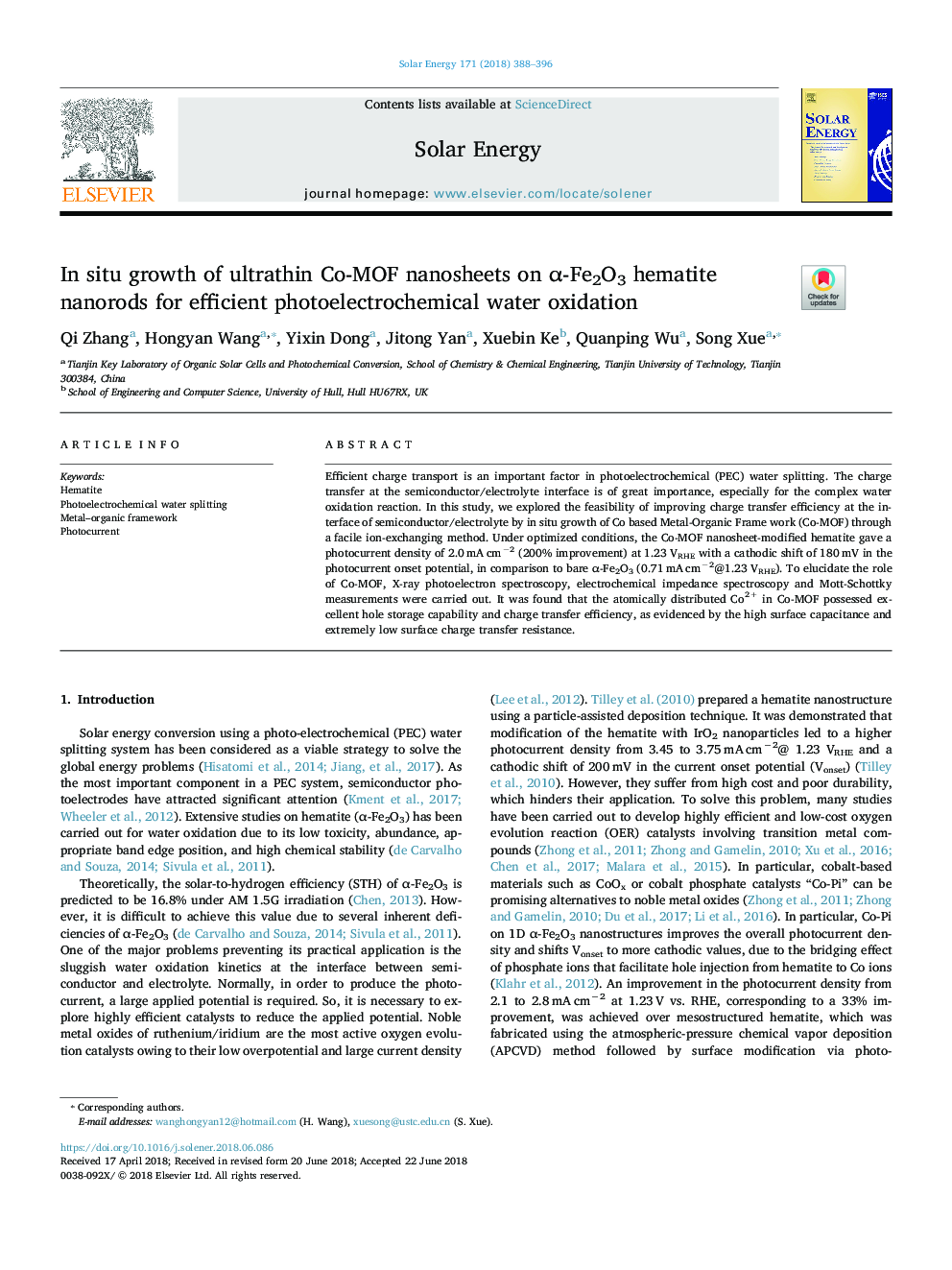| Article ID | Journal | Published Year | Pages | File Type |
|---|---|---|---|---|
| 7935006 | Solar Energy | 2018 | 9 Pages |
Abstract
Efficient charge transport is an important factor in photoelectrochemical (PEC) water splitting. The charge transfer at the semiconductor/electrolyte interface is of great importance, especially for the complex water oxidation reaction. In this study, we explored the feasibility of improving charge transfer efficiency at the interface of semiconductor/electrolyte by in situ growth of Co based Metal-Organic Frame work (Co-MOF) through a facile ion-exchanging method. Under optimized conditions, the Co-MOF nanosheet-modified hematite gave a photocurrent density of 2.0â¯mAâ¯cmâ2 (200% improvement) at 1.23 VRHE with a cathodic shift of 180â¯mV in the photocurrent onset potential, in comparison to bare α-Fe2O3 (0.71â¯mAâ¯cmâ2@1.23 VRHE). To elucidate the role of Co-MOF, X-ray photoelectron spectroscopy, electrochemical impedance spectroscopy and Mott-Schottky measurements were carried out. It was found that the atomically distributed Co2+ in Co-MOF possessed excellent hole storage capability and charge transfer efficiency, as evidenced by the high surface capacitance and extremely low surface charge transfer resistance.
Related Topics
Physical Sciences and Engineering
Energy
Renewable Energy, Sustainability and the Environment
Authors
Qi Zhang, Hongyan Wang, Yixin Dong, Jitong Yan, Xuebin Ke, Quanping Wu, Song Xue,
